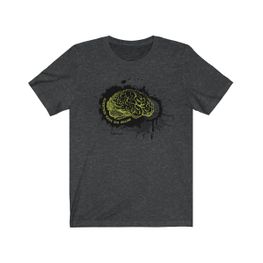Rimonabant: A Cautionary Tale for Targeting the Endocannabinoid System
The evidence that the endocannabinoid system (ECS) is intimately involved in food intake has been steadily mounting. Thus, in attempts to treat obesity, several pharmaceutical agents have been created to manipulate the food intake properties of the ECS to decrease appetite in obese individuals. In 2006, rimonabant was introduced into the European market by French pharmaceutical Sanofi S.A. as an appetite suppressant to help treat obesity. However, after adverse psychological side effects were reported, rimonabant was removed from the European market in 2008. It was never approved by the FDA in the United States due to advisory panel arguing against it based on potential psychiatric side effects.
Photo Source: unsplash.com
A little pharmacodynamics review. Rimonabant is an inverse agonist at the cannabinoid 1 (CB1) receptor. Briefly, an inverse agonist is a pharmacological agent that binds to a receptor and keeps it active at physiologically low levels. That is to say, because it is bound to the CB1 receptor, rimonabant allows for a small amount of constant activation. However, because it is bound to the receptor, our ECS system cannot activate it naturally. Thus its effects are similar to an antagonist, which blocks the activation of the receptor completely.
Blocking the ability of the ECS to activate CB1 receptors (and thereby contribute to hunger) seems to make a lot of sense...on paper. Animal trials used obese mice to test whether rimonabant was effective at decreasing body weight. It turned out that it was. Clinical trials soon started afterward, and the results looked promising. At least when the clinical endpoint was decreased weight. What manufacturers were unaware of was that rimonabant was causing anxiety, depression, and suicidal thoughts in their subjects.
Photo Source: unsplash.com
What might be the reason rimonabant causes psychiatric side effects? Well, remember that an inverse agonist means that the receptor, in this case, the CB1 receptor, is constitutively active (i.e. always on). If we take a look back at the cannabis literature, we find that some people who smoke marijuana report anxiety and paranoia. This is thought to be due to the main psychoactive component of marijuana, delta-9-tetrahydrocannabinol (THC). THC activates CB1 receptors, which are located throughout the brain. It could be that by consistently activating CB1 receptors (albeit at a low level of activity), rimonabant could have been mimicking, over time, the psychiatric effects more often seen acutely with THC use.
In fact, if scientists went back to the obese mice and looked for indices of depression or anxiety then they would have spotted these adverse psychological effects before investing time and money into costly clinical trials. These effects are so easy to see (but only if you are looking for them) in mice that rimonabant-induced depression is now an accepted model of inducing mood disorders in rodents. The catastrophic failure of rimonabant illustrates that we need to better understand our ECS if we want to design appropriate drugs which target it. Sanofi S.A.'s stock price plummeted when it was pulled from the market and it was sued for $40 million on behalf of patients who suffered suicidal thoughts. The discovery of the ECS and its role in food intake meant a new avenue for anti-obesity therapeutics. Nevertheless, the ECS is a complex system of which we really know little about. Pharmaceutical companies need to tread lightly if they hope to benefit from ECS-targeting drugs. See the video below for more information.
Video Source: YouTube.com
Sources: Reference Module in Biomedical Sciences, Side Effects Drug Annual, Wikipedia.com - Rimonabant, YouTube.com, The Brazillian Journal of Psychiatry, News-Medical.net, Neurobiology of Disease, reuters.com
-
MAY 07, 2024Is It Anti-RNP or Anti-Sm/RNP?
- See More
-
APR 30, 2024Immuno-Oncology Virtual Event Series 2024
-
MAY 07, 20243rd International Biosecurity Virtual Symposium
-
MAY 23, 2024For the Love of Digital PCR 2024
- See More



















































